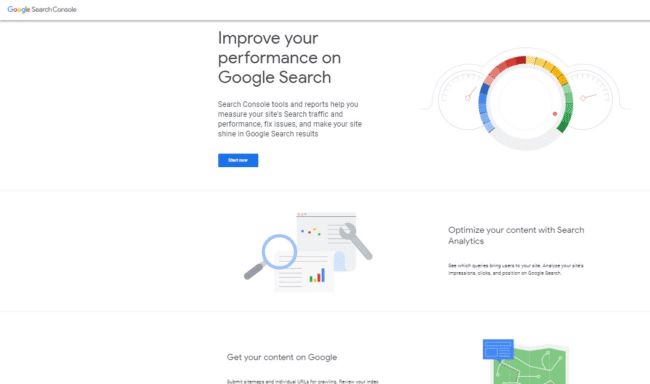SEO is what most sites live by. A good SEO strategy is the difference between a site being discovered by the masses versus being buried under the rubble.
With the growing amount of competition on the web, it’s increasingly important for anyone who has a web presence to use the right SEO strategy.
When you’re working as part of an enterprise, implementing the right SEO tactics becomes even more crucial.
However, enterprises have many layers, often making it challenging to gain buy-in for and adopt an effective enterprise SEO strategy. We have to ask questions like:
- Does the company have enough funds to truly see results in organic?
- Is SEO a priority at the enterprise?
- Does senior leadership support and understand the significance of SEO?
If the answers to these questions are no, these might be some of the very first roadblocks you’ll need to work through before you get started implementing optimizing your company’s SEO efforts.
However, if your enterprise is already on the SEO bandwagon and ready to see increases in revenues generated from organic search, the right SEO strategy can be a real game changer.

Although search engine algorithms have transformed drastically over the past several years, there are still some proven tricks of the trade that can help your company kick up its enterprise SEO strategy.
In this post, we’ll go through several of them.
But before we do, let’s tackle a common question that hangs in the minds of many:what’s the difference between regular SEO and enterprise SEO?
Table of Contents
Enterprise vs. Regular SEO
In essence, both enterprise and regular SEO are the same when it comes to the fundamentals. The key differences are in the characteristics and execution of each type of strategy.
For instance, with traditional SEO, you’ll typically have a smaller team focused on multiple areas of your SEO.
However, because these companies typically have smaller volumes of traffic to start with, they have to work harder to see a significant, positive difference in web traffic.
Enterprise SEO works a little differently.
Typically, organizations implementing it have larger digital marketing teams. To add to that, each member of the team has a specific duty and niche they focus on.
Because their roles are so specialized, these individuals dive deeper into their designated responsibilities to identify what they can tweak to see positive impacts on their SEO. Eventually, successful efforts reflect positively on the company’s bottom line.
Unlike smaller businesses, even a tiny spike in organic traffic for these large companies translates into thousands of new visitors. That’s because they’re playing with larger traffic volumes, to begin with.
Now that we’ve established the difference between traditional SEO and enterprise SEO, you may be wondering whether enterprise SEO is right for you. The answer to that depends on the complexity of your business and how many offerings you have.
Say you have tons of offerings, like Apple, that are advertised on your pages.

That’s a strong indication that you probably have lots of specific product pages too. For instance, if you sell devices, you might have a page for tablets, another for PCs, another for Android phones or iPhones.
Companies that have many offering are more likely to be the best candidates for enterprise SEO. Here are more characteristics that offer a greater indication that an enterprise SEO strategy is right for you:
- You have many team members dedicated to different areas of marketing
- Your company sees heavy traffic on your pages as a result of its size
- Your company has brand recognition
- You have thousands of offerings on your webpage
- You have a high level of authority in your industry
- You have a market that is in many regions, countries and languages
Now that we know the difference between regular and enterprise SEO and you can confidently know whether an enterprise SEO strategy fits the bill for your company, let’s take a look at practical ways to implement it.
Ways to power up your Enterprise SEO strategy
Once you’re confident your company fits the bill for an enterprise SEO strategy, it’s time to take action. Here are some tips you should employ to get the most from your company’s SEO efforts.
Think Google-friendly
Most people who query the web use large search engines like Google. In fact, 1.17 billion people use Google itself every day.
That’s why when you’re thinking of ways to take your enterprise SEO strategy to the next level, you should focus primarily on Google—because that’s where the majority of your searchers will go to query.
Understanding the quirks of Google is the first step in this process.
For instance, you should know that Google has spiders it uses to crawl websites. These spiders identify your pages and content and fetch information from them to feed to Google. Google then uses this information to determine when/if that content should show up in search engine results.
However, if your website is not structured correctly, Google will have a difficult time finding let alone crawling your site. One way to help it find and identify your content is by submitting a sitemap to it so it can more easily index your site.
A sitemap is a file where you submit information about your site, such as its pages, its contents’ relevance, and other data housed on it. Sending this information to Google lets it more easily identify and scope out your site.
However, know that even after you submit a sitemap, crawling doesn’t happen instantaneously. Google can take anywhere from several days to several weeks before it finally gets around to crawling your site.
Once Google knows what content exists on your site, it will be easier for it to bring you up in relevant search results.
Aim for the answer box
If you’ve ever been on Google, you’ve seen the answer box or may have even used it to find an answer to your query.
The answer box, if one is available for a particular topic, is the first thing that pops up in response to a query—before any other organic search results.

If you really want to make an impact on your enterprise SEO, you want to be the site whose answer pops up in that answer box because it’s the one most people click on since it displays first.
If your content does end up in an answer box, you’ll likely experience a lift in traffic.
Making that happen isn’t nearly as difficult as it may seem. Use these tips to boost your odds of landing the coveted answer box spot.
Strategy for being the answer box response
First, address the question or the answer to the anticipated query directly in one of your H1 headlines. This could be in a blog post that speaks to a specific query.
Here’s the link you’d see if you were to click on the answer box to the query: how many people use Google Search.
Notice the H1 heading directly answers that question.

Next, the content that follows the H1 heading should answer the query as directly as possible, usually in fewer than 100 words—as in the above example. When you start crafting this paragraph, aim to do it without fluff.
Instead, be direct, factual and concise to keep your readers’ attention and give them a quick response to their query.
Immediacy is key. At the same time, don’t reveal too much information. Give enough to partially satisfy them but lure them into wanting to read more so they feel enticed to click on your answer box link. The trick is in striking the right balance.
Search engines like Google track your site visits. When they see loads of visitors coming to you from the answer box, they’ll automatically take that as a signal that your site has good, relevant content. In turn, they’ll continue to rank your site high on SERPs.
Go content crazy
One thing we all know by now is that content truly is king. To make it work in your favor, be sure to design it so that it’s relevant to your audience. Content’s main purpose should be to draw in visitors repeatedly. The most surefire way to do that is by creating content that’s irresistible.
The more content you create, the more you’ll attract visitors and the more search engines will take notice. As we know, the more visitors, the better your site fairs on SERPs.
Before we move further on that thought, it’s important we clear up a common misconception. When most people think of content, they immediately think of only blog posts, but the term “content” encompasses much more than just that. It can mean podcasts, videos, images and more.
Essentially all of these serve one key purpose: to deliver information to visitors.
If at then end you decide blog posts are the way to go for you, there’s also the question of length to consider. Generally, long-form content fairs better SEO-wise. This is defined as any content longer than 1,000 to 1,200 words or so.

That’s because users typically tend to perceive posts of this length to provide information more quality-based and thorough than smaller posts.
While you’re off creating content, there are some best practices you should bear in mind.
Research your competitors
First, scope out the landscape to figure out what you want to/should write about. This will require some research. For instance, you’ll need to discover which topics your audience is interested in, what they’re talking about and their level of engagement pertaining to those topics.
The best way to get a sense of all this is by taking a peek at competitor sites. You’ll be able to see everything from topics, to shares, likes and comments on a post and more to determine what really interests your readers and what topics of interest you could potentially cover.
Answers to these questions can give you an idea as to what to aim for engagement-wise or even talk about in your posts.
Think of what your readers want
Delving deeper, you can research the mindset of your targeted audience. What problems does your audience face? What questions do they have? What keeps them up at night? Are they seeking inspiration?
The answers to these questions can not only give you further insight into topics you could cover, but more importantly the approach you should take in covering those topics.
Should you be sensitive, consultative, compassionate? Will you be focused on providing lots of facts and statistics to back your statements to build credibility? Or will you be sharing your own experiences and practicing empathy?
Unearthing these answers can help you determine the tone and style you should adopt when speaking to your audience.
Focus on keywords
If you know anything about SEO, you know that keywords are its backbone. Use the ones most queried and you’ll increase your page’s chances of being seen.
An easy way to identify these is by using tools like Ahrefs or SEMrush to see which related phrases or terms are most popularly used with a particular keyword.

SEMrush, for example, will display other interesting data, too, such as the volume, CPC and results in SERP for that keyword.
Based on the keywords you find to be most suitable for your content, you can then optimize your first paragraph, title, headers, etc. by inserting those keywords naturally where they fit. However, be careful not to force them in.
Readers are good about picking up on awkward phrases and constructions, which can be off putting. Instead, be strategic about the keywords you use and use them effectively when and where they fit effortlessly.
Doing this will help your posts perform better and make a sizeable difference in your traffic.
Spruce up your posts
If you do decide to create blog posts, make sure you focus on more than just your words. Pay attention to everything big and small and in between, such as images, graphics, videos, font, spacing, layout, etc.
It’s true that great content helps, but making it visually appealing and giving it a clean, professional look goes a long way in reeling in visitors and keeping them regular on your site.
Be original
One of the quickest ways to turn off a reader is by writing a post that regurgitates information they’ve already read on all of the other sites listed in top search results. This is where differentiation can help you stand out.
Choose a unique angle for your post or offer out-of-the-box solutions. In other words, be different and offer fresh, unique information, even (or maybe especially) when it comes to tried and tested subjects.
Leverage the right tools and data
One of the most important, key things you can do to amp up your Enterprise SEO strategy is stay laser focused on results.
Like most anything else in business, getting your Enterprise SEO strategy down pat will require a concentrated effort before you see results.
Fortunately, there are several tools you can leverage to help you gauge whether you’re treading correctly with your enterprise SEO efforts.
Google Analytics: gives you a wealth of information about your site, like how many visitors you had and when, where they’re from, where they spent the most time on your site (which pages), and more.

Google Search Console: lets you gain insight into important details, like which keywords drive traffic to your site, what issues exist, and how you can enhance site for Google.

Chartbeat: tells you which topics resonate with your audience, and which trending topics you can leverage on your site. It also does headline tests to help you further improve your content/headlines.
Yoast SEO: tells you whether you’re on target with site SEO. It’s a great tool to leverage as you craft new posts.

SEMrush: help you understand SEO and which keywords can boost your site performance for specific content topics. It offers several tools for every aspect of SEO.
Enterprise SEO tools like Conductor or DeepCrawl.
Conclusion
If you work your enterprise SEO strategy right, you’ll notice tremendous upsides for your company, like a larger audience base, greater brand recognition and a plumper bottom line.
The main aspects to focus on to augment your SEO performance are keyword usage, how to optimize your site for big search engines like Google, how to create the right (quality) content and when and where to use various tools to pull data and make sure your efforts are paying off.
Take it one step further by conducting a regular audit of your SEO. This will ensure you’re not missing the forest for the trees with your SEO strategy.

